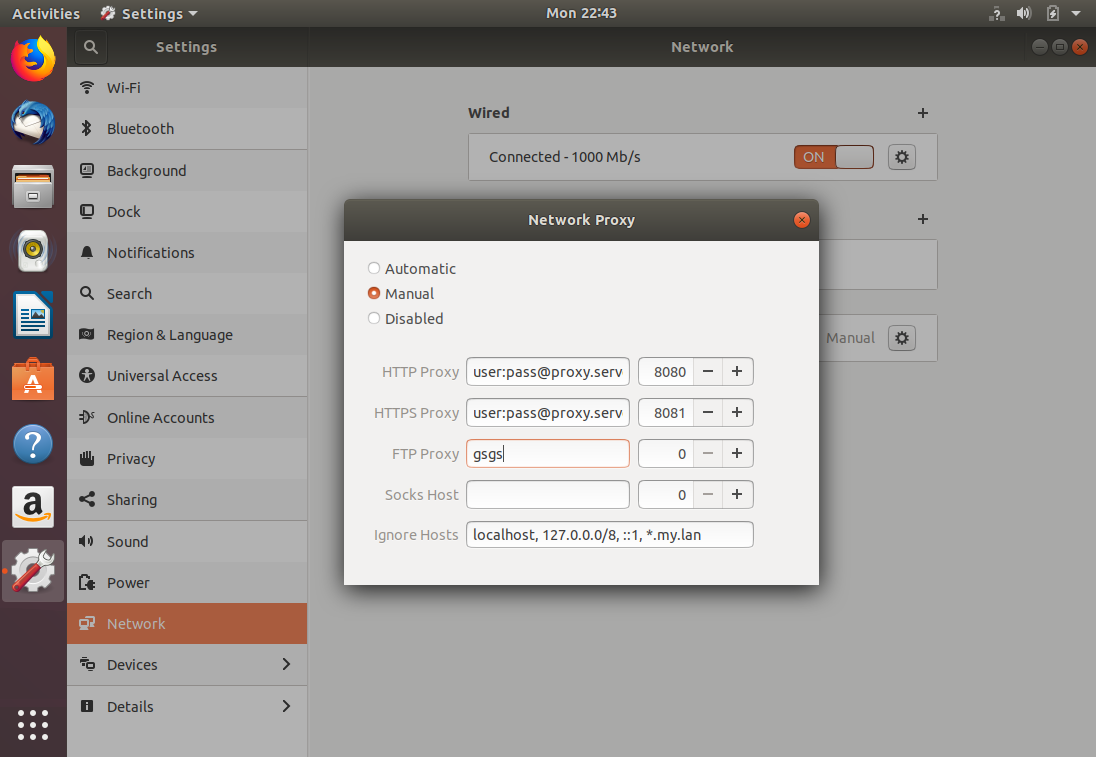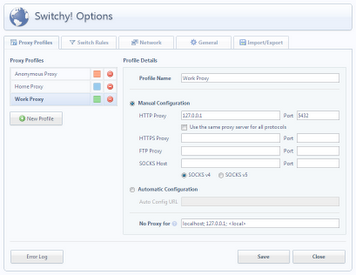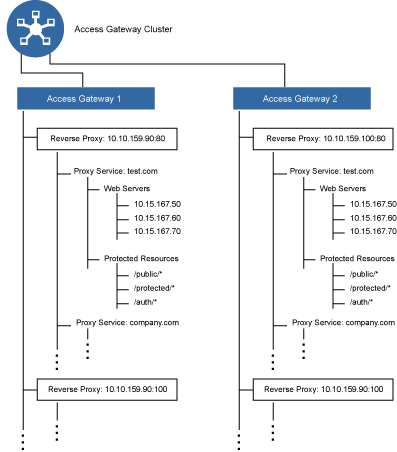There are two ways you can create multiple ad accounts on Facebook. One of them is the legitimate, sanctioned, and limited method. The other is potentially unlimited and unrestricted, but dangerous and technically against the Facebook ads terms of use.
Facebook Limits
Facebook has natural limits on various systems in their platform, and advertising is one among many. First of all, according to this page:
- You can be an admin, advertiser, or analyst on up to 25 ad accounts if the account owner or admin gives you those permissions. […] Keep in mind that when you create a campaign on Facebook for the first time with your personal Facebook login, you’ll be the owner of that new ad account. You can own one ad account at a time.
This says three things. Firstly, you can be an admin on as many as 25 accounts at once. Secondly, you can only OWN one account at a time. Third, being an admin is different from being an owner.
Fortunately, Somiibo’s Proxy Browser lets you run multiple proxies at once with each proxy existing in a separate tab. In this post we will cover what a proxy is and how you might be able to use the proxy browser to streamline your internet tactics. Toolbar icon indicates the current type of proxy your browser currently using (No Proxy Mode, Auto-detect Proxy Mode, Manual Mode, and PAC Script Mode). The extension is designed such that no resource is used while the panel is closed. Note: Toolbar icon is an indicator of the current proxy type. Hover mouse over the toolbar button to get more. Proxy manager uses by default 22999 for the web console and the api, 22225 for dropin and 24000 for first configurable proxy. To run docker with cli option see the below example: docker run luminati/luminati-proxy luminati -wwwwhitelistips ' 172.17.0.1 ' -ssl true.
The Legitimate Method
The method Facebook has implemented as a way for users to manage multiple Facebook ad accounts is through the business manager. The Facebook business manager is a business platform designed primarily for agencies with multiple clients. For example, if you’re a local advertising agency working with three local businesses, you can manage all of their ads through their accounts via business manager.
Business manager is not limited to just agencies, however. You can use it on a smaller scale as well. For example, you can have one business manager account linked to a Facebook and an Instagram account, and have different people – or different teams – using business manager to manage those two ad accounts. You can also just run ads for one business, but have more than one payment method installed, or manage deeper analytics than you get with just Facebook ad insights.
You can find the business manager here. Business manager can host a maximum of 5 ad accounts, and there is no way you can request more. This is what I mean when I say this method is legitimate, but limited. You can only own one ad account, and you can be admin of up to 25, but only five can be added to business manager.
As far as other restrictions go, they kind of make sense, but are difficult to intuit. You can’t add an ad account to your business manager if it has already been added as an asset to another person’s business manager. You can request access, though, which will transfer control from one account to the other. You can only add one ad account from your personal Facebook, but you can create a new ad account through business manager that is not tied to your personal Facebook.

It should also be noted that if you create an ad account through business manager, it will be tied to that business manager and can’t be transferred to a personal user, only another business manager.
In order to actually add a new account to business manager, there are three different processes you can use. You can find all of them detailed here.
If you don’t want to use business manager but still want to have more than one ad account, you could do something like talk to a friend or family member and see if they’ll give you access to theirs. Assuming they aren’t using it and have no plans to use it, of course. There are billions of people on Facebook and only a fraction of them have any interest in ad accounts, so there should be plenty of people you can find who would be willing to let theirs go.
Of course, there are two things wrong with this method. The first is that it’s technically impersonation, and even if you have verbal permission, if the friend decides they want to screw you over, they could report identity theft and you have no grounds to stand on. The second is that they have to either trust you with their username and password, or they have to know enough about Facebook ads to create the account and add you as an admin. Either way, it’s probably more than most people want to deal with.
Multiple Proxy Manager Job

The Sketchy Method
The alternative, if you don’t have any friends willing to lend you their accounts and you don’t want to use business manager, is to make a fake account. I’ve often seen people try to use this for their lower quality advertising, their potentially dangerous experiments, or just because their primary ad account was banned by Facebook.
Before I tell you how to do it, the first thing I’m going to tell you is that it’s dangerous to use. For one thing, it’s against the Facebook rules to have more than one profile, and that’s what you’re doing; making a second profile so you have a second account to play with. If Facebook catches you doing this, they can take all kinds of action. They could ban or remove your second account, they could suspend your access to ads entirely on your main account, and they can even ban your main account, depending on how bad they feel your transgression was.
So, basically what you’re doing is just making a second Facebook profile for a fake person that looks real enough, and then enabling that ad account. From there, you can either use the account as that user, or you can add yourself as an admin to that ad account and delete the account itself.
The second option here is more potentially legitimate, though you still have to follow all of the precautious I’ve listed below. Facebook is less likely to accuse you of faking an account if a) you have admin control added by someone else and b) the original owner has been removed already. However, just because the second account was deactivated doesn’t mean you’re safe; Facebook can still dredge up data about it, and will definitely look into it if you’re violating other Facebook ads terms.
The Precautions
As I said, you need to take precautions when you make a second account. Generally, this means keeping absolutely everything separate as much as possible. You need this new profile to look plausible, so use a real name, a real location that isn’t just your own location, and as close to real-sounding information as possible. Make a few posts that make it sound like you’re an actual new user finally giving in to using Facebook.
On a technical front, absolutely everything needs to be different from your default method of accessing Facebook. Use a different computer if possible. If you have to use the same computer, use a different web browser or a different user agent. Make sure you write down which information is used for which account; any cross-contamination can lead to your account being removed.
There is more data you want to keep separate. You need a different IP address, preferably different enough that Facebook can’t say “well they’re still coming from the same street, it’s probably the same person.” To this end, you want to use a web proxy, and you want a consistent proxy, not a free proxy.
There are two reasons for this. First of all, a free proxy is more likely to be on Facebook’s shit list already, and might have been used for this purpose by someone else. It does you no good to wear a mask if that mask was worn by a known spree killer, right? It might not lead back to you, but it will certainly jeopardize your second identity.
Secondly, free proxies have issues. They might inject ads or snoop your information while you use them, which means any personal or financial information you put in through the proxy might be stolen. Since you’re planning to use this for ads, you need financial information. Plus, free proxies are known for blowing up and disappearing, so it’s entirely possible that your identity can collapse when you need to change locations.
When using a proxy, I recommend a private proxy list, which means you’ll need to pay for it. Try to choose a proxy that is at least in the same country as the one you claim to reside in, and if possible, make the profile location information for your fake account match the same basic geographic area as the proxy. And, of course, try to make sure you’re always using the same proxy each time you access Facebook with this second account, and never use it for your primary account.
Other information needs to be changed as well. Your address, phone number, and other such information should differ as well. It does you no good to get this far and then get spoiled by the same phone number. If you don’t want to have the hassle of managing multiple phone numbers, you can use something like a forwarding number from phone.com, or just a simple Google voice number.
Finally, you will need different payment information. If you use a credit card for your main ad account, don’t use the same card, or even the same bank for the second account. You can open another bank account, but that might be overkill. You can use PayPal, or some other source of prepaid money, but you have to be aware of all of the payment methods and restrictions on them on Facebook. We covered some of that over in this article.
Once you have a complete second identity created, you can finally start using Facebook ads through that second account.
Why You Want a Second Ad Account?
The question, after all of this work, is why do you want to have a secondary ad account anyways?
One reason is simply that you want to run more ads without jeopardizing the quality score on your main account. Your second account can run ads you would consider more risky, to see how such odd strategies work, without consequence. Of course, with a lower quality score on your second account, those experiments will be more expensive. This is a potentially viable reason to run more than one ad account, but I still figure it’s better to just run the cheaper experiments with limited duration on your main account.
Another possible reason is that you’re trying to break a rule. If you’re trying to advertise a business or a product that is otherwise banned on Facebook, you wouldn’t want to do it with your main account. Of course, you’ll have to go through this process every few weeks or months when Facebook receives reports about your ads and bans your account. Then the more often you have accounts banned, the more likely Facebook is to trace it back to you.

If you’ve been banned from using Facebook ads before, you could create another account to try to circumvent the ban. I don’t recommend it, for all of the reasons above, but it’s something you can do.
On the other hand, if you have a reason like “I have two clients I need to run ads for” you can use one of the more legitimate methods. Have the clients create their ad accounts and set you as admin or advertiser on them, and you’ll be able to run their ads without needing their information. You can also use business manager for this use case.
Which method you use really comes down to how well you want to comply with Facebook’s rules for whatever use case you have. I generally don’t recommend getting on Facebook’s bad side; they’ll take action, and sometimes, you don’t want to be on the wrong side of that action.
Related Posts
Proxy Support How-To
Table of Contents
Introduction

Using standard configurations of Tomcat, web applications can ask forthe server name and port number to which the request was directed forprocessing. When Tomcat is running standalone with theHTTP/1.1 Connector, it will generallyreport the server name specified in the request, and the port number onwhich the Connector is listening. The servlet APIcalls of interest, for this purpose, are:
ServletRequest.getServerName(): Returns the host name of the server to which the request was sent.ServletRequest.getServerPort(): Returns the port number of the server to which the request was sent.ServletRequest.getLocalName(): Returns the host name of the Internet Protocol (IP) interface on which the request was received.ServletRequest.getLocalPort(): Returns the Internet Protocol (IP) port number of the interface on which the request was received.
When you are running behind a proxy server (or a web server that isconfigured to behave like a proxy server), you will sometimes prefer tomanage the values returned by these calls. In particular, you willgenerally want the port number to reflect that specified in the originalrequest, not the one on which the Connector itself islistening. You can use the proxyName and proxyPortattributes on the <Connector> element to configurethese values.
Proxy support can take many forms. The following sections describeproxy configurations for several common cases.
Apache httpd Proxy Support
Multiple Proxy Manager Software
Apache httpd 1.3 and later versions support an optional module(mod_proxy) that configures the web server to act as a proxyserver. This can be used to forward requests for a particular web applicationto a Tomcat instance, without having to configure a web connector such asmod_jk. To accomplish this, you need to perform the followingtasks:
Multiple Proxy Manager Job

Configure your copy of Apache so that it includes the
mod_proxymodule. If you are building from source, the easiest way to do this is to include the--enable-module=proxydirective on the./configurecommand line.If not already added for you, make sure that you are loading the
mod_proxymodule at Apache startup time, by using the following directives in yourhttpd.conffile:Include two directives in your
httpd.conffile for each web application that you wish to forward to Tomcat. For example, to forward an application at context path/myapp:which tells Apache to forward URLs of the form
http://localhost/myapp/*to the Tomcat connector listening on port 8081.Configure your copy of Tomcat to include a special
<Connector>element, with appropriate proxy settings, for example:which will cause servlets inside this web application to think that all proxied requests were directed to
www.mycompany.comon port 80.It is legal to omit the
proxyNameattribute from the<Connector>element. If you do so, the value returned byrequest.getServerName()will by the host name on which Tomcat is running. In the example above, it would belocalhost.If you also have a
<Connector>listening on port 8080 (nested within the same Service element), the requests to either port will share the same set of virtual hosts and web applications.You might wish to use the IP filtering features of your operating system to restrict connections to port 8081 (in this example) to be allowed only from the server that is running Apache.
Alternatively, you can set up a series of web applications that are only available via proxying, as follows:
- Configure another
<Service>that contains only a<Connector>for the proxy port. - Configure appropriate Engine, Host, and Context elements for the virtual hosts and web applications accessible via proxying.
- Optionally, protect port 8081 with IP filters as described earlier.
- Configure another
When requests are proxied by Apache, the web server will be recording these requests in its access log. Therefore, you will generally want to disable any access logging performed by Tomcat itself.
When requests are proxied in this manner, all requestsfor the configured web applications will be processed by Tomcat (includingrequests for static content). You can improve performance by using themod_jk web connector instead of mod_proxy.mod_jk can be configured so that the web server serves staticcontent that is not processed by filters or security constraints definedwithin the web application's deployment descriptor(/WEB-INF/web.xml).